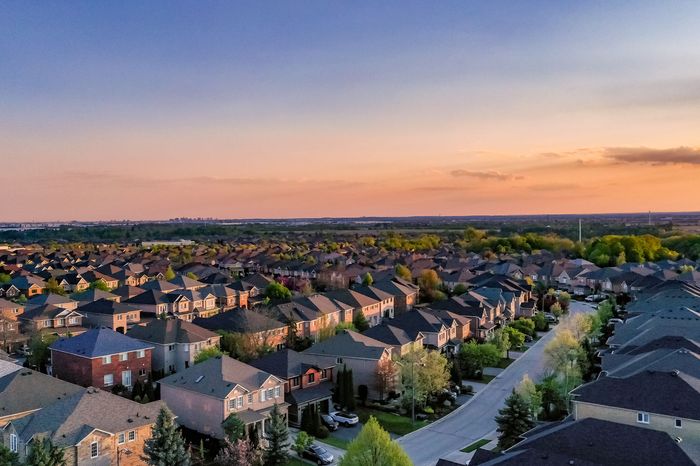Foreclosure filings are up 132% from a year prior. Here’s what that means for the housing market (and it’s not what you might think).
Foreclosure filings are up 132% from a year prior. Here’s what that means for the housing market (and it’s not what you might think).
Post Date:
08-09-2022
By Alisa Wolfson

Plus, what to know if you are considering buying a foreclosure
When we were reading through real-estate data this month, three stats caught our eye. The first: that the number of active foreclosures (this is when the foreclosure process has begun on a seriously delinquent loan, but it has yet to be completed and liquidated) edged up by more than 7,000 in March — the first year-over-year increase in almost 10 years, according to mortgage technology, data and analytics provider Black Knight. Secondly, more than 78,000 U.S. properties had a foreclosure filing during the first quarter of 2022, which is up 39% from the previous quarter and up 132% from a year ago, according to real-estate analytics company ATTOM. And third, serious mortgage delinquencies — those 90 or more days past due — are 70% higher than they were pre-pandemic, according to Black Knight.
While those numbers seem grim, pros say the reality isn’t as bad as it looks: Though active foreclosures are up on a year-over-year basis, the number of loans in active foreclosure is still way below historic norms. On average, prior to the pandemic, the country saw about 30,000 to 40,000 foreclosure starts per month. But the foreclosure moratoriums that were put in place as part of the CARES Act in response to COVID-19 drove all of that normal activity to a halt. And for the most part, the continued low foreclosure starts are because the vast majority of folks who had taken advantage of forbearance have come out of such plans and returned to performing on their mortgages. And those who remain in forbearance may still have protection against foreclosure until they reach the maximum allowable forbearance period.
As for foreclosure filings, Rick Sharga, executive vice president of market intelligence at ATTOM, says that though “foreclosure activity increased significantly in the first quarter of 2022 … that doesn’t indicate a sudden weakness in the housing market, or the U.S. economy. Mortgage servicers are essentially ‘catching up’ on processing foreclosures on loans that were already in default or more than 120 days delinquent prior to the pandemic. Many of these loans are fairly old — issued prior to 2009.” And he adds: “We’re not expecting to see a huge wave of foreclosure activity anytime soon. … Even with the dramatic increase in [first quarter] foreclosure activity, we’re still running at about 50% of the normal level.”
And finally, regarding serious mortgage delinquencies, though they are up since the pandemic, in March they fell 12% for the strongest single-month improvement in 20 years, and there are actually more than 1.2 million fewer serious delinquencies than there were last March, Black Knight reports. What’s more, delinquencies overall are way down. Black Knight reports that 30-day delinquencies — borrowers who were just a single payment past due — plunged 20% from February. The reason for this decline? A combination of rising employment, student-loan deferrals, strong post-forbearance performance and millions of refinances has helped put downward pressure on delinquency rates.
Why do foreclosures and delinquencies matter to the housing market?
We watch foreclosures and delinquencies because they are often a sign of distress, which can indicate weakness in the housing market. Given the decrease in delinquencies from a few months ago, experts suggest that even a minor uptick from the beginning of the year isn’t a reason to worry. “These delinquency rates are so low that they’re not having much effect on the overall housing boom,” says Jeff Ostrowski, analyst at Bankrate. Although the housing market needs any and all new inventory, Ostrowski says he doubts the volume of foreclosures will be enough to really make a dent in the inventory squeeze. “Foreclosures are at a very low level and the legal process can take months, so I don’t expect any real fallout from the foreclosure uptick,” says Ostrowski.
What does this all mean for home buyers and sellers?
Pros say you shouldn’t expect a shift in the housing market as a result of these foreclosure upticks. “With demand for homes exceeding supply by so much, no one is going to get a foreclosure for a steal. Competing buyers are bidding up prices for all homes, including foreclosures,” says Holden Lewis, a home and mortgage expert at Nerdwallet.
It’s possible however, that you’ll come across foreclosed properties when searching for a home — and if you’re considering buying one, you’ll likely want to understand the different types of foreclosures listed for sale. “Many real estate investors are looking for a deep foreclosure bargain, but it’s still a seller’s market,” says Lawrence Yun, chief economist at the National Association of Realtors.
Depending on the stage of the delinquency process, you may find pre-foreclosures where a lender notifies the homeowner that they’re in default; short-sales where a homeowner tries to sell the home for less than the mortgage value due to financial distress; sheriff’s sale auction where properties in default are sold at courthouses, bank foreclosures known as real estate owned (REO) properties, and government foreclosures where properties are purchased with loans from the Federal Housing Finance Agency or Veterans Administration.
Properties in foreclosure can be found on the multiple listing service (MLS), so you don’t need to go hunting undercover for them — they’re available for anyone to see. “Properties going through foreclosures are also listed in newspapers, bank offices and websites. For buyers considering a foreclosed property, auctions are another venue to find available houses,” says Ratiu.
That said, a serious delinquency can be devastating for a homeowner because it means a hit to their credit score and potentially a default and foreclosure, says Ostrowski. The silver lining is that because prices are holding strong, a struggling homeowner should be able to sell their home before losing it, but the same homeowner then has to keep themselves afloat in an expensive rental market.

